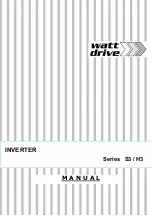
TASCAM US-2x2/US-4x4
13
INPUT). If that is the case, turn the MONITOR
BALANCE knob to the right of center.
In addition, check the status of the unit's connection
with the computer.
Moreover, if you make the following settings, sound
will be output through this unit, but no sound will
be output by the computer’s speakers or headphone
jack.
Windows 8/Windows 7
• See the “Windows 8” or “Windows 7” instructions
in the “Windows Media Player” section of “8 –
Application guide” in the Reference Manual, and
make settings as necessary for the OS.
Conduct procedures 1–4 for Windows 8 or
procedures 1–3 for Windows 7 to set the default
device for playback.
OS X
1. Quit all applications and open “System Prefer-
ences…” from the Apple menu.
2. Open “Sound”.
3. On the Output tab, select “US-2x2” or “US-4x4”.
After completing the setting, restart the
computer and check the sound of playback.
Depending on the application that you are
using, you might need to make additional device
settings.
In particular, DAW software operates using audio
engines with settings that are different from the
OS settings, so confirm the DAW driver settings
first after installing the software for this unit.
Please see the manuals for the applications that
you are using for detailed setting procedures.
8
Sound breaks up or there is noise.
The processing load on the computer causes sound
to break up and noise to occur.
Here are some methods to reduce the load on the
computer.
1. A wireless LAN and software running in the
background, including antivirus software,
regularly put processing loads on the computer,
which can cause sound to break up and other
noise.
Stop wireless LAN transmission, antivirus
software and other software running in the
background when using this unit.
2. Set the buffer size (latency) in the audio appli-
cation that you are using or in this unit's Settings
Panel to a larger value.
NOTE
Consult the maker of the audio application that
you are using for methods to reduce its load on
your computer.
3. Change the settings of your computer so that
they are optimal for audio processing.
Windows 8
1. In Windows 8, right-click the ordinary start
screen (Metro user interface screen) and then
click “All apps”.
2. Right-click “Computer” and select
“Properties”.
3. Click “Advanced system settings”.
4. Click “Settings” in the “Performance” section
of the “Advanced” tab of the “System
Properties” window.
5. In the “Visual Effects” tab of the “Performance
Options” window, select “Adjust for best
performance”.
Windows 7
a) Turn Aero off.
1. Right-click the desktop and select “Person-
alize”.
2. Select a “Basic” or “High Contrast” theme.
b) Performance settings
1. Right-click “Computer” and select
“Properties”.
2. Click “Advanced system settings”.
3. Click “Settings” in the “Performance” section
of the “Advanced” tab of the “System
Properties” window.
4. In the “Visual Effects” tab of the “Performance
Options” window, select “Adjust for best
performance”.
OS X
1. Open “System Preferences…” from the Apple
menu, and select “Energy Saver”.
2. Set “Computer sleep” to “Never”.
3. Set “Display sleep” to “Never”.
NOTE
Depending on the Mac OS version and
Macintosh computer model, this setting might
not be available.
8
SONAR LE support
Our company does not provide support for SONAR
LE.
Please refer to the SONAR LE help menu for instruc-
tions about using the application.
8
Cubase LE support
Our company does not provide support for Cubase
LE. Please refer to the Cubase LE help menu for
instructions about using the application.














































